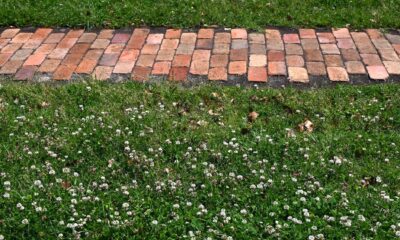Technology
You are probably mowing your lawn incorrectly

Do you give your lawn a buzz cut every time you mow? Most lawn experts agree that this is a common mistake many homeowners make mowing the grass too shortwhich can inadvertently promote weed growth.
That’s not the only common mistake. Effective lawn maintenance involves more than just mowing your garden every week. It is essential to recognize and avoid some common mistakes in timing and technique to obtain and maintain lush, attractive and weed-free grass. Here’s what you need to know about proper lawn mowing practices.
Ensure optimal grass height
Keeping your grass at the ideal height plays a crucial role in preventing weeds from taking over your lawn. By mowing your lawn to the recommended height of 3.5 to 4 inches during the growing season you will help block the light that weeds need to germinate and grow. This height also promotes a healthy root system, aids in moisture retention and contributes to the overall health of the lawn.
It is generally recommended to use the “a thirdrule, which means that you should never cut more than a third of the blade of grass in one mowing session. For example, if your target grass height is 3 inches, you should aim to mow when it is approximately 4 inches. By following this approach you can encourage stronger root development and reduce stress on the grass. This helps maintain a healthier lawn overall.
Knowing whether you are caring for Bermuda, Zoysia, Fescue or another type can significantly impact how you should care for it. Each grass has specific needs for watering, mowing and fertilizing. Bermuda grassfor example, it thrives on frequent mowing and needs sufficient sunlight Zoysia is more shade tolerant and requires less frequent mowing to stay healthy. On the other hand, Fescue has excellent drought and heat tolerance, which affects how you manage it during the warmer months. Understanding the different characteristics of your lawn’s grass type will ensure more effective care, leading to a healthier and more resilient lawn.
Time your mowings
Avoid mowing during the hottest part of the day to keep you and your grass healthy. Late afternoon or early evening is ideal because the sun is less intense and the grass is dry. This helps prevent the grass from getting too much stress and losing too much moisture. It is important to avoid mowing wet grass to prevent clumping and prevent your mower from becoming clogged. So you can avoid early morning when dew is present.
Sharpen the mower blades regularly
Maintaining sharp lawn mower blades is essential for a healthy, attractive lawn as they provide a clean cut that heals quickly and is resistant to pests and diseases. Dull blades tear the grass, creating jagged edges that stress the grass and increase its vulnerability to ailments. Sharp blades improve mowing efficiency, reduce equipment strain and prevent grass from becoming a breeding ground for pests and diseases. Regular maintenance of the blades, including regular sharpening, promotes robust grass growth and maintains the aesthetic appeal of your lawn. For optimal lawn health, sharpen your mower blades every time 10 hours of use or at least once per mowing season, or whenever you notice irregular cuts.
Change the mowing pattern
Changing the mowing pattern each time you mow your lawn will promote healthy grass growth and keep it looking even and lush. By regularly alternating the direction in which you mow, you prevent the grass from constantly being pushed in the same direction, which can cause it to lean and grow unevenly. This practice also ensures that the blades of grass are cut from different angles, leading to a more uniform height and reducing the risk of developing ruts and ruts. compacted soil. In addition, varying the mowing pattern minimizes wear and tear on a specific part of the lawn, allowing better recovery and growth of the grass blades.
Leave the grass clippings behind
Leaving mowed grass on your lawn after mowing, a practice known as grass bikes, offers several environmental and horticultural benefits. These clippings decompose quickly and return essential nutrients such as nitrogen to the soil, acting as a natural fertilizer that improves soil health and reduces the need for synthetic fertilizers. This creates a nutrient-rich soil that supports healthy grass growth, saves on fertilizer costs and minimizes environmental impact by reducing nutrient runoff into water bodies. Grass recycling helps maintain soil moisture by providing a natural layer of mulch, reducing the need for watering and promoting a healthier, greener lawn without the extra work of collecting and disposing of clippings.









